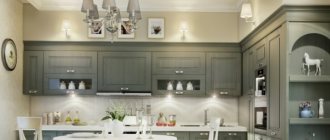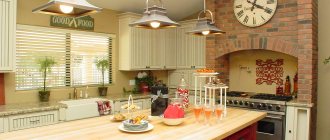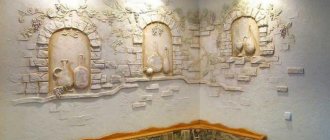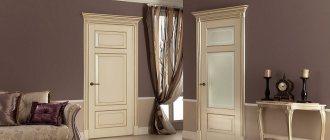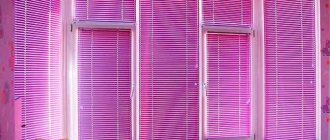Many people in an apartment prefer to have a cat who does not need to be walked outside and is easier to care for. At the same time, cats can damage not only furniture, but also walls, since one of their basic instincts is to grind their claws down. Animals use door upholstery and protruding corners for this purpose, but most often it is upholstered furniture that suffers. A DIY cat scratching post is considered an effective way to help save the situation.
A scratching post is a must-have attribute in a house where there is a cat.
Why do you need a scratching post for a cat and why do animals damage surfaces?
No matter how cute a domestic cat may seem, the animal was still initially classified as wild, so many instincts are preserved in domestic animals. Even cats that permanently live in an apartment, but for some reason find themselves outside, when in danger, try to climb a tree or any other high surface. Outdoor cats use their claws not only for climbing, but also for hunting prey. It is the sharp claws that allow the animal to grab onto another animal with a death grip.
If there is no scratching post, the animal will grind its nails down on furniture, wallpaper and other surfaces.
This is interesting! Recently, the “soft paws” operation, which involves the complete removal of the nail phalanx, has become popular among cat owners. However, most veterinarians are categorically against such manipulations, because after it the animal essentially becomes disabled. Complete declawing can be compared to amputating a person's fingers.
The claw itself is considered a sensitive element, the surface of which is constantly renewed. A person has the opportunity to cut his nails as they grow, and the animal removes the stratum corneum using any suitable surface, be it the trunk or roots of a tree. As for wildlife, when sharpening their claws, felines release special substances that leave an odor on the surface. This method is considered one of the options that allows the animal to mark its territory.
A cat that lives permanently at home does not have the ability to grind its claws on the hard surface of asphalt or wood, so if there is no scratch for the cat, the animal will use any surface it likes for this purpose. If the cat is not offered an alternative option, it may well come to the point that you will have to change the upholstery of the furniture or re-glue the wallpaper.
Animals use a scratching post to remove the stratum corneum from their claws.
Design of a sharpener for cats
Before starting work, you should familiarize yourself with important tips and recommendations:
- The height of the working column for sharpening claws should not be less than 100 mm;
- Beds and other accessories are located above the column;
- The diameter of the pillar is at least 100 mm;
- The house is installed on top of the entire structure;
- If there is more than one cat in the family, then the beds are installed on the same level;
- The base of the device must be strong, heavier than the weight of the pet, and its dimensions are quite large.
- If the object is created from a pipe, then its height should be twice the length of the cat.
- The cardboard sharpener is only suitable for kittens and small breeds.
- It is not necessary to hang toys on ropes in this structure.
We invite you to familiarize yourself with the Toilet seat for cats
For this reason, you can choose the type of structure and determine the location for it. The cat must be directed to the right place by taking its paws in your hands and running them along the rough surface of the sharpener. Pet the cat and treat her to something tasty. Observing the movement of the animal to its favorite place, pick it up and take it to the scratching post.
On furniture that is at risk from sharp claws, you can spray a few drops of citrus freshener. Cats do not like this scent, and it will repel the “attempt.” You need to be patient with getting your cat accustomed to the sharpener; this process is not quick. The animal needs to be praised and treated, so the cat will quickly understand that sharpening its claws on a special device will only be praised.
What requirements must a DIY cat scratching post meet?
Before you make a cat scratching post with your own hands, you need to know what requirements the design must meet:
- Durable. So that the cat can easily remove the stratum corneum, the product must first of all be hard, but not excessively, because it is quite easy to damage the claws.
- Rough and fibrous. The material used for covering should not tear easily, otherwise there is a possibility that the animal will become entangled.
- Non-electrifying. If the surface becomes electrified, most likely the pet will not use the structure for its intended purpose. Furry pets are considered especially sensitive to static currents.
In general, we can say that the ideal cat scratcher should be made from natural materials, among which the most popular are:
- tree;
- hemp rope;
- sackcloth;
- thick cardboard;
- high quality natural fabrics.
The sharpener must be durable, safe, and made from natural materials
When making your own cat houses with a scratching post, it is not recommended to purchase synthetic materials, because they are often overly durable, which can lead to complete loss of the claw during the cleaning process.
Very important! When creating a sharpener for cat claws, it is strictly not recommended to use self-tapping screws with large heads or staples for a stapler as fasteners, because they often cause hair and claws to be torn out.
What to make a scratching post with your own hands and what materials it is better not to use
Due to the fact that cats are overly sensitive to odors, it is recommended that cat scratching posts be made from natural materials that do not have a strong aroma. In general, in order not to make a mistake, you should watch your pet, whose behavior can tell you which material he likes best.
For scratching posts, you can use only natural, safe materials.
Some cats like to use cardboard boxes as sharpeners, others prefer carpets or upholstered furniture surfaces. Therefore, homemade options made from cardboard are suitable for some, while for others, jute or sisal rope can be offered as an alternative, and in this case, carpet will also work. But wrapping structures with synthetic ropes is not recommended for the following reasons:
- a pungent odor that can scare away an animal;
- rapid wear;
- unsafe composition.
As for the last point, at first glance, this does not seem to be a problem, because the product is used only for cleaning claws. However, it must be taken into account that pieces of material will inevitably fall under the claws, which the cat licks with its tongue. This is how plastic will penetrate the pet’s body, which is unlikely to have a positive effect on its health. Often, the constant influence of plastic and synthetic dyes on the body causes the development of pathologies of the gastrointestinal tract and respiratory diseases. Some experts associate the constant entry of synthetics into the animal’s body with the formation of tumors.
To make a fray you can use sisal, carpet, wood
Many owners note that their animals prefer to sharpen their claws on wooden surfaces. In this case, a strong, healthy, straight-grained tree is suitable for making a scratching post. Of the deciduous species, birch is considered the most successful option, and of the coniferous species, any tree except spruce is suitable.
If you decide to make your own scratching post for a cat from wood, you need to make sure that the material is well dried and weathered. Workpieces should be kept outside until the smell disappears. Readiness for use is indicated by a change in color to gray, and in coniferous trees layering appears.
This is interesting! If the wood intended for work has a slight yellow coating, you should not be alarmed, because it is most likely lichen, which is considered harmless and will not harm the tailed one.
An original scratching post made of thick cardboard
Some people prefer to minimize the effort and simply bring the animal a part of a cut tree trunk, the so-called chock, and the cat is delighted with it. Of course, you will have to allocate an area of the room for installation, but there is no need to build an additional stand or platform. It is important to choose such variants of wood fragments that they have a knot-free area equal to the height of the animal standing on its hind legs.
What else should you consider when creating a scratching post with your own hands?
If you want to save money, it is quite acceptable to simply take a board as a claw grinder, but the animal will much prefer a high bed equipped with a place for sharpening. Most cats prefer to spend time on high ground because it offers a clear view of everything that is happening. Every cat owner has noticed that the pet’s favorite place can be the window sill, which offers a view of the street.
There is also an opposite point of view. Some experts argue that you should not combine scratching posts with houses, because animals prefer not to leave their own marks near the den. Among other things, before making a scratching post for a cat, you need to take into account other parameters that the design must meet:
Scheme of a simple scratching post for cats with dimensions
- Sustainability. It is important to consider that during a jump the animal exerts a load on the surface that is 2-3 times greater than its weight, so the product must be designed for this. Otherwise, if the cat falls, there is a chance that she will no longer use this scratching post.
- Suitable size. The scratching post should not take up the lion's share of the area of the room where it is installed. It is best in a small room to place the device in a corner or other place where it will not interfere. If the size of the house allows, you can create a large cat house with a scratching post with your own hands.
- Durability. The material must withstand claws, tugging and constant exposure to teeth.
- Attractiveness. The design should become a full-fledged element of the interior, therefore, in appearance, it should be combined with the rest of the objects in the room.
Main types of scratching posts for cats: photos of various options
A scratching post for cats is considered the most common option, suitable for self-production. The product is a vertical column wrapped around the perimeter with the selected material. As for classification, structures according to their shape are divided into the following types:
Wall-mounted scratching post is perfect for a small apartment
- floor;
- hanging;
- corner;
- in the form of a rug;
- ring-shaped.
Scratching posts designed for wall mounting are flat boards securely fixed to the surface. If you look at the photo of scratching posts, you will notice that the product is fixed in the place where the animal prefers to stretch (this is easy to notice from the wallpaper). Sisal or jute is used for winding. The main advantages of installing a wall-mounted nail clipper:
- takes up minimal space in the room;
- can be installed anywhere;
- there is no risk of capsizing;
- differs in ease of self-production.
Helpful information! Wall-mounted scratching posts are popular because they perform an aesthetic function in the apartment: it is with such products that you can cover a damaged area of wallpaper.
The vertical sharpener can be mounted on a wall or furniture
Another important advantage of the wall-mounted option is that the product is suitable for installation even in a room with a minimum area. Among the disadvantages of such a design is the difficulty of moving from place to place, because the product is attached to the wall with nails or other strong fasteners, which somehow spoil the appearance of the walls. But this can only cause difficulties when moving, because if a cat is used to sharpening its claws in one place, then it is unlikely that it will choose a new corner for this.
Floor and corner scratching posts for kittens and adult animals
Another option for a wall scratching post is a corner one, which is considered an improved version of the previous product. The scratcher is installed on the protruding corner of two perpendicularly adjacent walls. The design has a flat shape, which is considered relevant when choosing a product for a small home. The main advantages are compactness and cost-effectiveness, but, like a regular wall-mounted sharpener, the corner version will be difficult to move to a new location. Due to the fact that it is protruding corners that are chosen by pets, a corner scratching post will prevent the need for unplanned repairs.
There is always the opportunity to supplement the product with a higher-lying platform. Firstly, the cat will be interested in looking down on everyone, and secondly, the scratching post will not interfere with cleaning the apartment.
A corner scratching post can be placed in the area where your cat likes to scratch.
Not all pets like to sharpen their claws on the surface of walls. Some choose carpets or other horizontally placed objects for this purpose. Such animals should be given a floor-mounted scratcher. Looking at photos of scratching posts (made with your own hands), you can pay attention to the following forms of products:
- Flat. They are simply boards laid on the floor, covered with sisal. The main advantages are compact size, easy installation and ease of use.
- Convex-concave. The designs have the shape of a wave, this allows the cat not only to sharpen its claws, but also to play with the object. This option is somewhat more complicated to manufacture; in addition, it will require a lot of space for installation.
- Scratching post with a toy. Such products are usually upholstered with carpet or other suitable material, and an artificial mouse is fixed in the upper part. This is how they make their own toys for kittens, who, having got frisky, happily begin to sharpen their claws on the mat attached below.
- Simple cardboard products. The main advantages of such a nail clipper are its low price and simple manufacturing method. Cardboard scratching posts will appeal to most pets, but you should be prepared for the fact that fragments of the material will be scattered around the sharpener, and you will have to change it 2-3 times a year.
Unusual floor-type scratching post made in the shape of a cactus
Other options for DIY cat scratching posts: photo
The greatest demand in pet stores is for cat racks in the form of columns with platforms. When making your own, you should carefully choose the optimal height. It is recommended for a kitten to choose an option up to 0.5 m, however, it must be taken into account that in just 6-8 months the cub will turn into a real adult cat, which will require a product with a height of at least 70 cm.
This is interesting! A correctly selected height of the scratching post will allow the kitten to calmly perform his favorite stretches, which will help develop not only his back, but also his joints.
Depending on the planned budget and functionality, you can perform various options, for example:
Drawing of a multi-tiered structure with a scratching post, a house and a playground
- Pillar with platform. Economical not only financially, but also in terms of the territory occupied. In order for the product to last longer, you should not skimp on choosing a high-quality rope for the scratching post.
- Angular. Takes up very little space. It has a semicircle shape, making it easy to place the scratching post in an empty corner. If necessary, the product can be moved to the desired location.
- Scratching post with a house. It will be a little more difficult to make the product with your own hands, but as a result, the pet will receive not only a place to play, but also its own den, where it will feel safe. If the animal is of medium size, a standard-sized house (35x35 cm) is quite enough for it.
Special mention should be made of large play complexes for animals that have two or more levels. Such structures usually consist of the following elements:
- house;
- beds or hammocks;
- stairs;
- tunnel;
- hanging toys.
A house with a scratching post for a cat is the most versatile option
Such complexes are suitable for playful cats, and they are also recommended when several animals live in the house. In this case, each individual can choose a shelf for itself, from where it will be convenient to observe what is happening.
Before you make a scratching post with a cat house with your own hands, you need to take into account that the assembled structure will take up a lot of space, so this option is suitable for large apartments or private houses. It is important to understand that no matter how attractive the product is, it should be constantly kept clean, because a cat is a clean animal. If the claw clipper is in an unattractive state, the cat may ignore it.
Basic rules for securely installing a scratching post
Wall and floor products must be properly attached to the surface. If the fastening is weak, then under the influence of the weight of the cat during the process of sharpening nails, the structure may fall and frighten the animal. There is a high probability that the animal will not only be injured, but also lose interest in the product.
When installing a floor-mounted option, you should also check the stability, because if the scratching post does not stand well enough and is not additionally attached to the floor, then the structure may move during games and irritate the animal. Top tips for installing sharpeners:
The claw scraper must be stable, and all its parts must be well secured.
- It is better not to use nails as fasteners for a scratching post made by yourself from scrap materials. Self-tapping screws are considered more reliable, and a structure made from them will be more stable.
- If you have to use nails or staples, you should not do it on the front part, because the cat will cling to them and may get hurt. It is best to hide the fasteners on the back side.
- Mint or catnip leaves placed under the upholstery will help prevent the formation of mold and the proliferation of pathogenic microorganisms. In addition, plants can attract the attention of an animal.
- It is recommended to make wall structures with two hinges located in the corners. In this case, the structure will be securely fastened, as a result of which the cat will not be able to move it during the sharpening process.
Helpful advice! Most tailed animals prefer to sharpen their claws in the morning after waking up, so you should install the claw grinder near the place where the animal is used to sleeping.
As for other tips regarding where it is best to install a scratching post, pet owners recommend doing it where the animal scratches the surface most often. If it is a protruding corner of the wall, the sharpener should be placed there. The main thing is not to place the product too close to the surface, because the cat can use both surfaces.
The scratching post must be securely installed so that the cat cannot knock it over.
If possible, sharpeners should be installed in all places where the pet left marks. Just for his safety, it is not recommended to attach the sharpener to the door frame, so that no one accidentally crushes your pet.
How to make a hanging scratching post for a cat with your own hands
Before you make a scratching post with your own hands, you need to prepare a piece of plywood or a rectangular wooden panel, the width of which is within 40-45 cm. This distance is enough so that your pet does not touch the wallpaper surrounding the product when sharpening its claws. The length of the scratch should slightly exceed the height of the animal standing on its hind legs with its forelimbs extended upward.
Once a suitable base has been selected, the material for the upholstery should be determined. Thick corduroy is considered the optimal fabric for a scratching post. The dimensions of the material must exceed the dimensions of the prepared rectangle so that it is possible to wrap the edges and secure them well on the back side using construction glue or a stapler.
A sharpening covered with carpet turned inside out is considered more durable. For greater strength, experts in the manufacture of such structures advise folding the upholstery in two layers. In addition to the basic options, it is also permissible to use a cotton blanket, twine or jute rope for this purpose.
A hanging scratching post can be combined with a play area
For wall mounting, it is first recommended to make several holes and attach the scratching post using 4 slats of the same size and 8 screws - 4 in the corners and 4 in the center. It is very easy to make a corner scratching post with your own hands. The step-by-step instructions are as follows:
- take 2 identical pieces of plywood: width – at least 25 cm, height is selected depending on the height of the pet;
- glue fabric or hemp upholstery to both blanks;
- Using screws, secure the finished products on both sides of the corner protruding in the room.
This is interesting! If you don’t have time to make a full-fledged scratching post, you can simply attach one or several pieces of carpet of the required thickness and height to the wall.
Ladder
With a staircase, the house will look even more colorful and unusual. Moreover, it is quite simple to do, so why not spend a little time on it? Here are a few simple steps you need to follow:
1. Using a jigsaw, cut 2 identical boards measuring 95 by 7 cm.
2. Make an oblique cut with it, as in the picture above. The reverse side can be made not oblique, but rounded.
3. At the end of one of the sides you need to make a small round cut.
In order not to make a mistake in the cut (its height), it is better to make it at the end of the work, when the almost completed staircase is already standing near the scratching post.
4. We make steps for the stairs from round timber. You will need 5 pieces 20-25cm long. The diameter of each is approximately 3cm.
5. Holes must be made in the boards for each step.
6. Insert the steps into the holes.
7. We secure the first and last steps with 2 screws.
You should get something like this:
The staircase is ready. Now you can also decorate it by wrapping the steps with twine and making a design on the board.
DIY floor scratching post for cats: diagrams, dimensions
Making a floor-type scratching post for a cat with your own hands is considered a rational solution, because the product is easy to move to any other place, and when installing it, you do not need to damage the walls with fasteners. Moreover, a large assortment of different models allows you to choose the best option for self-production, depending on your skills and the availability of tools.
Floor designs come in a wide variety of options.
The simplest option is a regular horizontal claw pad, which can also serve as a cat bed. To make it, you need to take a piece of plywood or a regular board, cover it on both sides with pieces of carpet, the dimensions of which are a couple of centimeters larger than the dimensions of the wooden blank. It is necessary to sew both fragments of upholstery together with thick threads, after which the manufacturing process of the product is considered complete. If you have a little more time and inspiration, you can try a more complex version of the horizontal sharpener. Step-by-step instructions for a DIY scratching post will look like this:
- Prepare rectangular boards (at least 30x60 cm in size).
- Nail or screw using self-tapping screws on each side a wooden block of board of the same size.
- Check that the fastener caps are not sticking out. It is better to make a special recess for them.
- Coat the wooden piece with adhesive and wrap it with twine, jute or sisal rope.
You can make the structure with a slight slope so that it takes on the shape of a slide. For production you will need 2 wooden boards, one of which will be longer. This is necessary in order to create the required angle of inclination of the product.
Step-by-step diagram for manufacturing a floor-mounted sharpener with a house
For upholstery, you can use either carpet or other dense fabric. The covering can be fixed using glue applied to the inside of the covering material. You can reliably connect the parts together using furniture corners or tightly screwed screws. To make the structure more stable, it is recommended to fix it near the wall.
You can quickly make scratching posts from cardboard with your own hands. However, it is worth taking into account a significant disadvantage of the products - a short service life. For homemade products you will need to prepare the following materials:
- thick cardboard;
- scissors or stationery knife;
- glue;
- scotch.
A simple step-by-step instruction for a DIY scratching post involves the following steps:
Floor-mounted scratching post for pets, inclined type
- Using any convenient cutting tool, cut the sheets of cardboard into strips of the same size.
- Twist and glue them together one by one.
- As a result of such gluing, you should get a circle with a diameter of 45-60 cm - here everything will depend on the size of the animal.
- To give the product a more attractive appearance, it can be additionally decorated with various fabrics.
Before upholstery, the product should be covered with tape around the perimeter. This will add strength to the nail clipper and extend its life.
Assembling the scratching post
To prevent the structure from “falling apart,” it must be secured with self-tapping screws; if desired, you can additionally use glue. We fasten the rods from the bottom with self-tapping screws, after which we string tubes and shelves onto them.
Look carefully at the photographs so as not to be mistaken.
DIY scratching post: step-by-step instructions, photos of various options
This type of sharpener is popular not only among lovers of homemade products, because making a scratching post for a cat is quite simple, but also among animals who happily use such products. To work, you will need to prepare a sheet of chipboard, which will be used as a stand. If this is not available, an old countertop or an unnecessary cabinet door will do. The main thing is that the base has sufficient width and is stable - then the animal will not overturn the structure on itself during play.
For the post you will need a base, timber and sisal rope
As for the shape, you can choose different options: rectangle, square, oval or any other fancy configuration. It is important that the shape gives stability to the sharpener and fits into the surrounding interior. It will be quite simple to make a perfectly round base using a compass, which is used to draw a line. It is best to cut with a jigsaw.
If desired, you can leave the base simply wooden, especially if beautiful natural wood was used for manufacturing, but you can also use some kind of upholstery, because there is a high probability that the animal will choose the product as a lounger. It is easy to cover the base with jute rope, which is secured to the side and placed in a spiral, moving towards the center.
The post is made from a metal or PVC pipe, or a strong tree branch with a diameter of at least 7-10 cm is suitable. Some experts suggest making a post from tin cans, inserted one into the other and connected with glue. To make the structure heavier and provide better stability, something heavy should be placed at the bottom of the first jar, for example, a piece of concrete or steel. You can wrap it around with the same carpet or rope. To connect the column and the base, furniture corners are suitable.
Helpful advice! If a wooden post is used, it can be either round or rectangular - in the form of a bar. The optimal height is considered to be 60-80 cm. More often the surface is left uncovered, but if the column is not very attractive, then it is additionally wrapped with cord.
The scratching post is the simplest and most popular option for making
If desired and if there is excess material, you can place an additional shelf at the top, which corresponds in shape and size to the base. It is not difficult to make a three-story structure in which the shelves are connected to each other by columns. In this way, a do-it-yourself climbing frame for cats is made, which is especially relevant for an active animal.
However, in this case, it must be taken into account that when the animal jumps on, the structure will be subject to significant load. To further attract attention, a rope with a toy attached to it is fixed on top.
Materials
• Cuttings of plywood or chipboard of different sizes, 20mm thick. • Cardboard pipes with a diameter of approximately 7 cm. These pipes can be found in places where linoleum is sold. If it is not possible to find cardboard pipes, you can use plastic sewer pipes. • Round bars with a diameter of approximately 3 cm (holder from a shovel, rake). You will need 4 of these. • Dense foam (expanded polystyrene). • Fabric with which the scratching post will be upholstered. What kind of fabric it is, in principle, does not matter. But it is better to use thicker carpet or carpet. • Batting material for upholstery. • Twine (rope). • Velcro.
Yes, it takes a lot. But in the end you should get something like this:
Now let’s start making a scratching post for cats with our own hands.



